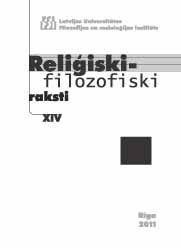Zemes un auglības kults masku gājienos Latvijā
Agrarian and Fertility Rites in Mask Festivals in Latvia
Author(s): Aīda RancāneSubject(s): Customs / Folklore
Published by: Latvijas Universitātes Filozofijas un socioloģijas institūts
Summary/Abstract: The author discusses the fertility rites used in traditional mask festivals. The research is based on the collection of ethnographic data gathered during the 20-ies and 30-ies, augmented during the subsequent period, and deposited in the Collection of Latvian Folklore and in the archives of the Institute of the History of Latvia. On top of that, part of the empirical material has been acquired by the author at field researches in various parts of Latvia. The analysis of the respondents` answers has led the author to conclude, that masks are vehicles for bringing of abundance and ferility. Masks and mask rituals constitute a significant element of the soil and fertility cults; they are semantically integrated within the ritual year, for the masks used in the marches – their appearence, activities and texts clearly bespeak of the purpose to foster fertility. They are unmistakably designed to closer approach the sacred secrets of life-propagation, so as to control it for the benefit of the community. The mask festivals awaken the dormant sources of vitality, they open up and enhance the creative life-energies and ensure successful continuation of lifecycles. Alongside the verbal, musical, sound-producing and kinethetic elements, the mask rituals display an abundant use of visualisation effects. These are plainly connected with fertility symbolism. In order to reveal the basic meaning of the fallic symbolism – the life-giving effectiveness connected with masculinity in connotation with the physical, social and the divine power and bravery, the traditional mask marches in Latvia make use of various representations of the fallic symbol. Yet, the display of fallus is not only a divination of the male sexual organ, or a kind of demonstrative intimidation sign. It is used to imply the close connection between the human being and the creative phenomena of nature. Many archaic communities have associated fallus with the creator of the universe – a god or gods who ensure the fertility of the crops. A specific element of the Latvian mask rituals is bluķis (a log) which is also connected witht the fallic symbolism. Bluķis is made of oak tree, which is a symbol of masculinity in the Latvian folklore. By hauling it from one farmstead to the neighbouring one, a symbolic „fertilization” of the fields is taking place, and the people, by jumping over or around it, are participating in a significant ritual action. Thrashing,dancing, tease-singing, water-splashing are significant mask ritual actions connected with fertility; so are also play-acting of elements of marriage, namegiving and burrial rituals. It is worth mentioning, that such a rite as ritual plaughing, which is common in most of the North European mask festivals, is not to be found in Latvia.
Journal: Religiski-filozofiski raksti
- Issue Year: XIV/2011
- Issue No: 1
- Page Range: 99-130
- Page Count: 32
- Language: Latvian

